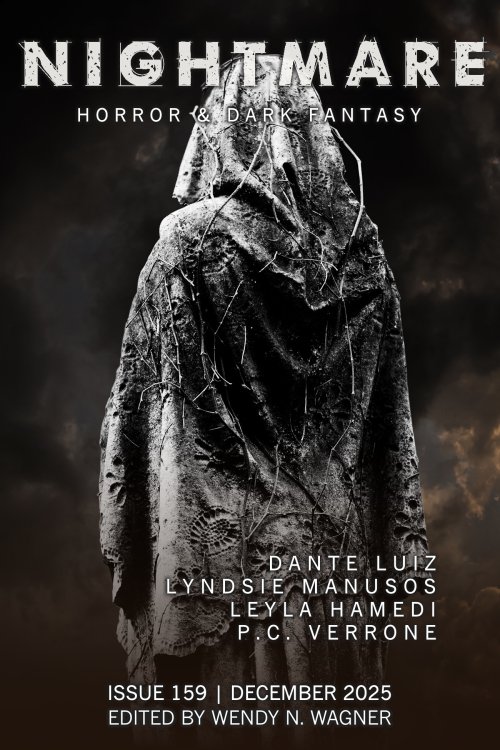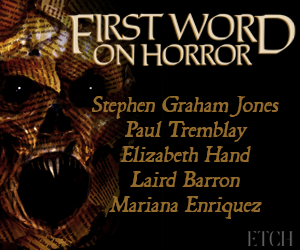“You can go missing in the forest.”
It is something that is just accepted: Forests are places where things become lost. There is a dark, entangled history that grows in the shadows of the woods, weaving through myth and legend—through stories we have told and warnings we have whispered into the night. The forest is the void of the unknown, a ravenous mouth that picks clean the bones of trespassers because the forest has a stomach, and that stomach has never been full.
It is not immediately apparent that the series Over the Garden Wall contains perhaps the darkest forest in fiction. The setup of two people lost in the woods is hardly unfamiliar. In fact, Over the Garden Wall feels manifested from our collective understanding of what a forest is. Bright and whimsical in the morning sunlight, and then past a certain point changing into something grim and unknowable—a force conspiring to swallow you whole. More than nearly any other forest, there is a digestive quality to these woods: a growing certainty that anyone trapped too long will disappear forever.
The “Bennington Triangle” is a wooded area of the Northeastern United States where, between 1945 and 1950 five people vanished. Only one body, that of Frieda Langer, was ever recovered, despite hundreds joining the search. She was only three miles from the forest’s edge. She took a year to find. It becomes impossible to see any forest differently after that: unable to do anything but imagine being absorbed into the woods.
The thing about trees is that they move. Not at the dramatic speed of fairy tales, but watch any timelapse of root growth and you will see they are animate in a very real sense. Tree networks also conspire—passing information about potential food sources through fungal links we are just beginning to comprehend. These revelations bring to mind pulpy images of carnivorous plants, ready to chew with gnashing teeth. In reality, forests do not have teeth—but depending on temperature, a forest network will cooperate to break a body down to a skeleton in a matter of weeks. It is clear why so many legends portray trees as scraping, grasping entities waiting to consume those who do not tread carefully.
When writing Lord of the Rings, Tolkien did not imagine the forest gentle. Breathtaking, at a time filled with ancient, righteous fury at others, yes, but never gentle. Never unmoored from the wild. The forests of Hayao Miyazaki’s Princess Mononoke are much the same: untamed, unknowable, unwelcoming to those who wish them harm. Both become stories of violent clashes between nature and industry, of scars that fester into rage and resentment. Though less fantastical, real tree networks do communicate danger and potentially even remember injury—processing information on a slow timescale, but processing it nonetheless. The forests of these stories recall an era before the wounds, and though you may seek shelter among their trunks—the woods are under no obligation to welcome you.
The puritan family of the film The Witch assumes the forest will provide for them. Yet even before the titular supernatural element appears, the wood feels distinctly inhospitable. Perhaps not visibly angry like the groves of Miyazaki or Tolkien, but no less apathetic. Even without something waiting in the dark, there is a sense this family will not survive . . . but there is something waiting in the dark.
If a forest was haunted in European folklore, chances are it was haunted by one particular archetype. The witches of The Witch are, notably, archetypal—in many ways embodiments of the family’s fear and paranoia carried with them across the Atlantic. Puritans saw witches as interlaced with the vast canvas of the North American woodland—there is a reason why Over The Garden Wall, a story largely woven from early New England storytelling, features them so heavily. Over the centuries, witches have become inexorably tied to the long shadows of the forest—feverish manifestations of the woods’ imagined danger.
It is peculiar then, that the most iconic reimagining of the ‘spooky witch in the American woods’ tale never shows you a witch at all. The movie The Blair Witch Project seems to posit that the menace of a forest comes from suggestion: that finding a scrap of clothing from someone dragged off by a witch is scarier than finding a body. It is a persuasive argument; what’s stuck with me most about the Bennington Triangle disappearances are the few things the forest left behind—a single rifle cartridge in the dirt. Luggage still lying on a bus rack. Uncertainty breeds anxiety—I think that is why sequels and spinoffs to The Blair Witch Project aren’t as effective. They can’t help but show the monster, because surely that’s scarier than an empty forest.
In the same way the family in The Witch descends into paranoia from fleeting sightings of the supernatural, the original The Blair Witch Project works because it is a reminder that the woods can terrify, regardless of how often you can actually glimpse something in shadows. In fact, it is likely because of their obscured nature that woodlands have generated so many tales of monsters.
But for all the terror they have conjured, there is also something vital that abyssal forests offer the psyche. To watch a timelapse of old growth forest decline in the US is to feel a real sense of loss—learning how these once-mythic spaces were cut down to shadows of their former selves. I think of giant sequoias on the West Coast—trees that seem right out of an enchanted fable, rivalling the heights of what you would see in a Miyazaki film . . . now endangered.
Author Robert MacFarlane writes, “As the forest has declined, so too has the world’s wilderness” (The Wild Spaces) noting how many foundational legends relied upon the forests. Earth’s now-diminished wildwoods offered a birthplace of monstrous superstitions, but also a unique kind of storybook bewilderment, and it is impossible not to mourn that, even if what remains is still capable of swallowing the mind.
When trying to map the liminal quality of a forest’s horror, I find myself drawn to the language of aviation. PONR or “point of no return” is a term for the moment in which an aircraft no longer has the fuel required to return safely. It is a terrifying thought—and one I have experienced even while exploring virtual forests. Even in games not classified as horror, there have been moments where I felt a panic creep in as I realised I didn’t know the way back. Though the in-game map will almost always lead the player to safety, it is shocking how strong underutilized animal instincts can become when trapped amid unfamiliar trees.
One of the most unexpectedly harrowing examples of passing a forest’s PONR comes, surprisingly, from The Sopranos. Late into the third season, two mobsters confidently venture out into the New Jersey pine barrens to dispose of a body—not realising how lost they have become until, predictably, far too late. What follows is a kind of rapid devolution of the two criminals falling apart as a lifetime of experiences in an urban environment prove utterly useless against the simple reality of the wilderness.
It feels like a testament to the enduring power of nature; that a realistic, city-based crime show has a spooky forest episode—and it works. While genres and medium shift, the fear of wandering too deep into the woods has never left us. Indeed, forests have continued to loom in our mind even as we dream of the stars, towering above the far-flung planets of science fiction.
The most common shorthand we have to portray an alien world as unmapped is to cover it with a copse of suspiciously Earth-like trees. As a sequestered island in the cosmos, distant planets naturally coincide with our notions of backwoods inaccessibility, offering the perfect staging ground for tales of sylvan isolation for our heroes to crash-land into.
The video game The Forest doesn’t take place on an alien planet—but it might as well. Once your plane plummets into the impossibly isolated island, there is no safe zone to escape to. The entire map is past the PONR, with no walls between you and what stalks in the woods. Unlike The Blair Witch Project, there are capital ‘M’ monsters in The Forest, twisted amalgams of body parts that blend into the branches. Despite the series’ popularity, I had completely missed this was a monster-centric series. So, you can imagine my shock when I realised my task was not just to survive alone in the woods.
However, as a survival game, The Forest is not purely about the experience of being helpless in the backcountry. Like most works in its genre, it allows you to carve out a space for yourself, to alter the very landscape to suit your need. It is an appealing fantasy: that one could sculpt the shape of a woodland into something more human-centric. The simplest landmark of our attempts to reshape the wild is the road or path—a line cut through the network of the woods. We associate artificial lines with safety, with folktales urging children to seek them out: “Follow the Yellow Brick Road.” Making a path or wall is one of the first things I tried to do in the game, only to be confronted with how long it realistically takes to chop down a single trunk. It was a difficult idea to give up on, that with the right line and boundaries, I might reshape the volatile unknown into a place of rules and safety.
The reason why the Bennington Triangle has proven such an enduring mystery is because of the assumption that there must be some other explanation. From cannibals to Bigfoot, people feel there must be some further story behind five individuals disappearing into the same patch of forest. Never mind the fact that the patch is poorly defined, but at the very least a few hundred miles wide—more than enough to swallow a few bodies.
It is disheartening to think it might just be the forest. That the likely death of a system might well be a green one is a concept that expanded into the way we think about apocalypses. Dusty hellscapes used to be the default vision for the end of the world, with nary a plant in sight—but lately, I have noticed more and more pieces of post-apocalyptic media depicting distinctly arboreal Armageddons. It may have once seemed far-fetched, that civilisation might fall, but that forests would continue, growing up from our buildings, breaking down concrete and brick as easily as they can human bodies. The creep of the roots will never truly stop. It can only be delayed.
That is why the ending of Over the Garden Wall is so impactful. It is worth it to see how after every demonstration of the forest’s eternal hunger, every admission of death’s inevitability, all the insidious whispers of The Beast, the protagonist basically says, “No! No, the woods can’t have me right now. My brother and I are going home.” It is such a simple rejection of the expected doom and gloom ending, even if it is steeped in a strange melancholy that the woods will eventually catch up.
Over the Garden Wall isn’t afraid of acknowledging that death will arrive in due course—but first, you must live. A time will come when we are all digested by the root, but that time is not today. Today the woods are blessed with a gentle breeze, today the creek is babbling sweetly, today there are hidden things budding just beneath the soil, waiting for you.








